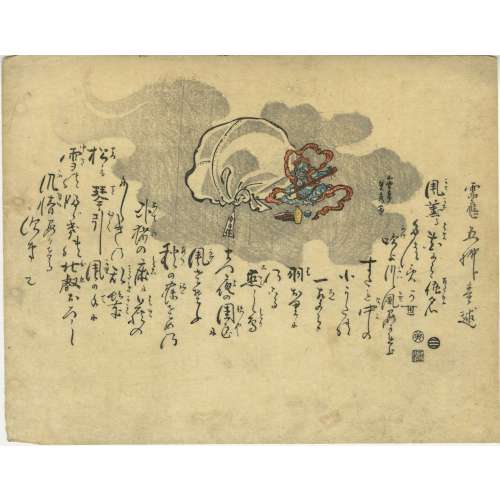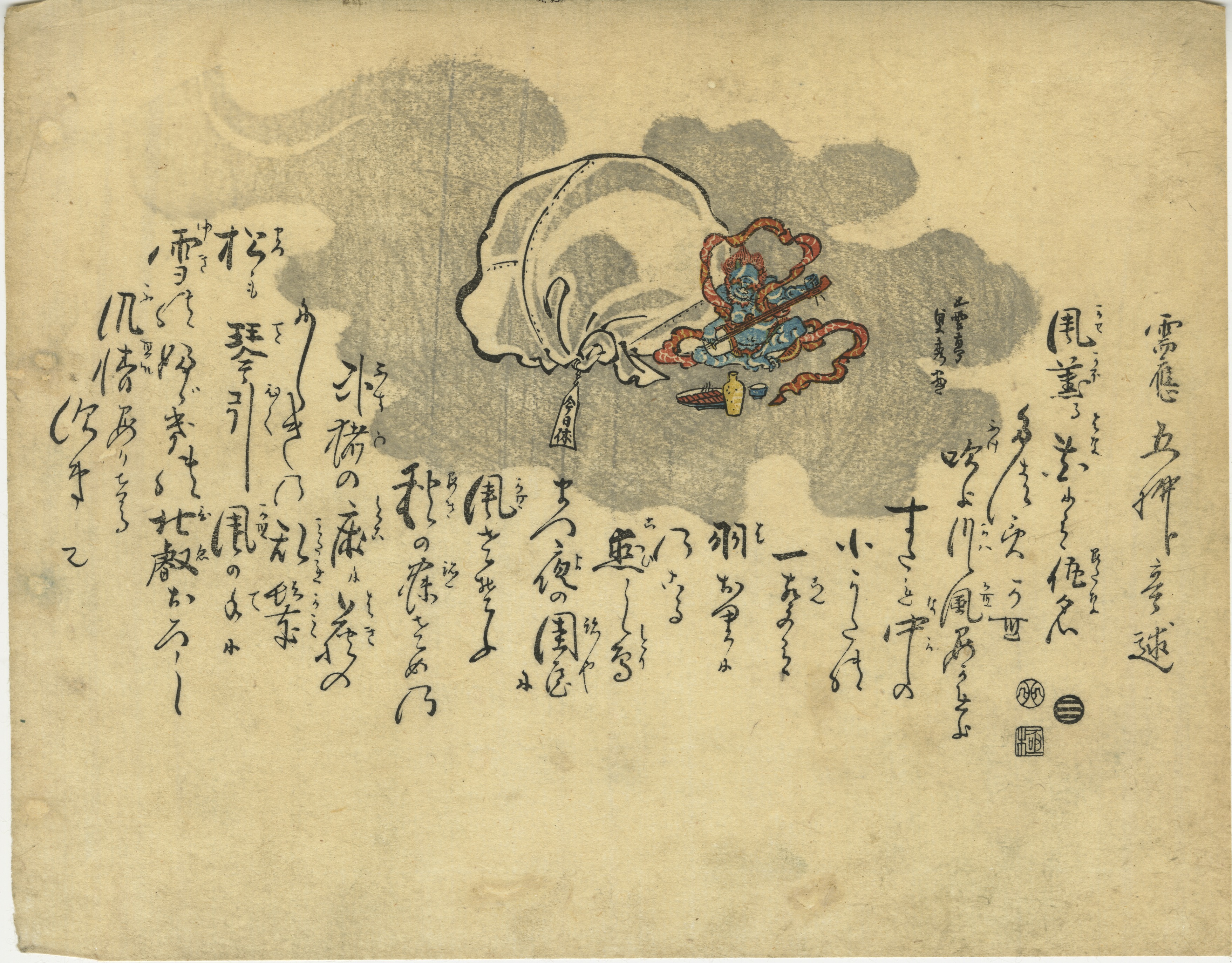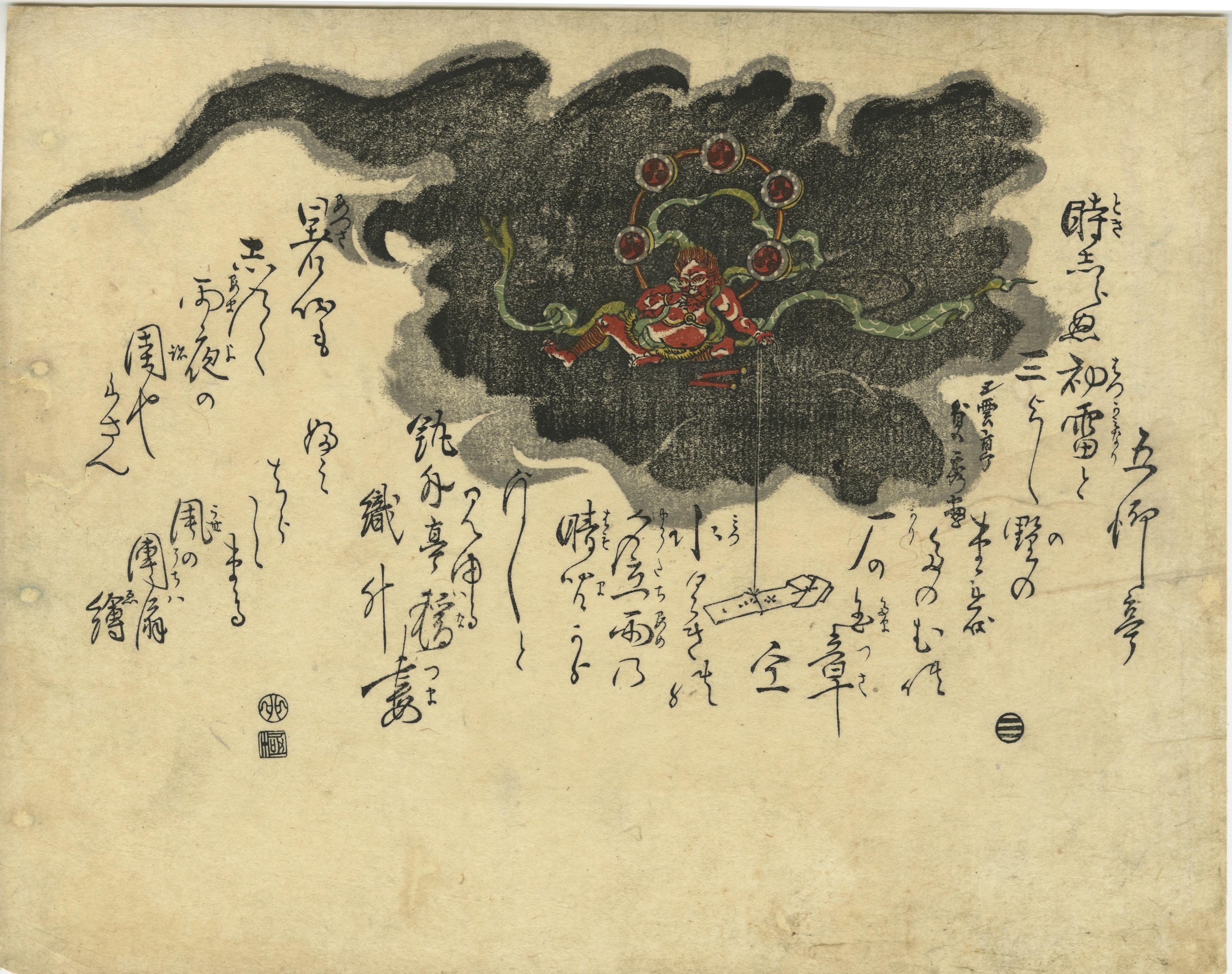Sawamura Gennosuke II [沢村源之助] (Suketakaya Takasuke III, Sawamura Chōjūrō V, Sawamura Sōjūrō V, Sawamura Tosshō I, Sawamura Genpei I, Japanese, 1802/7 – 1853) as Ushiwakamaru [牛若丸], a.k.a.
Minamoto no Yoshitsune [源 義経].
Ichikawa Danjūrō VII [市川団十郎] (Ichikawa Ebizō V, Ichikawa Hakuen II, Ichikawa Shinnosuke I, Japanese, 1791 – 1859) as Benkei, a.k.a.
Saitō Musashibō Benkei [西塔武蔵坊弁慶] (Japanese, 1155 – 1189)
Performance: Grand finale dance play [大切所作事] (
ōgiri shosagoto) at Soga Festival - A Composite Piece of Musashi「曽我祭武蔵摂物 ごさいれいむさしのひきもの)」 (
Gosairei Musashi no hikimono)
, performed at Kawarazakiza (河原崎座) in 05/1831 (See kabuki plays from 1831). Soga Festival (Soga Matsuri) is an annual theatre event in Edo (Tokyo).
Scene: The Fight on Gojo Bridge or Benkei on the Bridge [橋弁慶] (
Hashi Benkei). The story relates how Benkei, first a monk, then a mountain ascetic, and then a rogue warrior, a man of Herculean strength, was subdued by the young Onzoshi Ushiwaka Maru (Yoshitsune) on Gojo Bridge. Benkei wandered around Kyoto with the intention of relieving 1000 samurai of their swords. One night, with one more sword to go, he saw Yoshitsune playing the flute and wearing a golden sword at the Gojotenjin Shrine. They agreed to fight on Gojo Bridge in southern Kyoto. However, Yoshitsune was too agile for Benkei and had been educated in the secrets of fighting by the tengu. Following Yoshitsune’s victory, Benkei became Yoshitsune’s retainer.
Artist: Utagawa Kunisada [歌川 国貞], a.k.a. Toyokuni III (Japanese, 1786 – 1865).
Publisher: Ibaya Senzaburo [伊場屋仙三郎].
Signed:
Gototei Kunisada ga [五渡亭国貞画].
Date-aratame seal: Tenpō 2 (1831).
Size: Fan print (uchiwa-e).
Ref.: (1) Tokyo Metropolitan Library, 請求記号
M339-6/東M339-006. (2) Ritsumeikan University, Art Research Center, Portal Database
M339-006(02).








